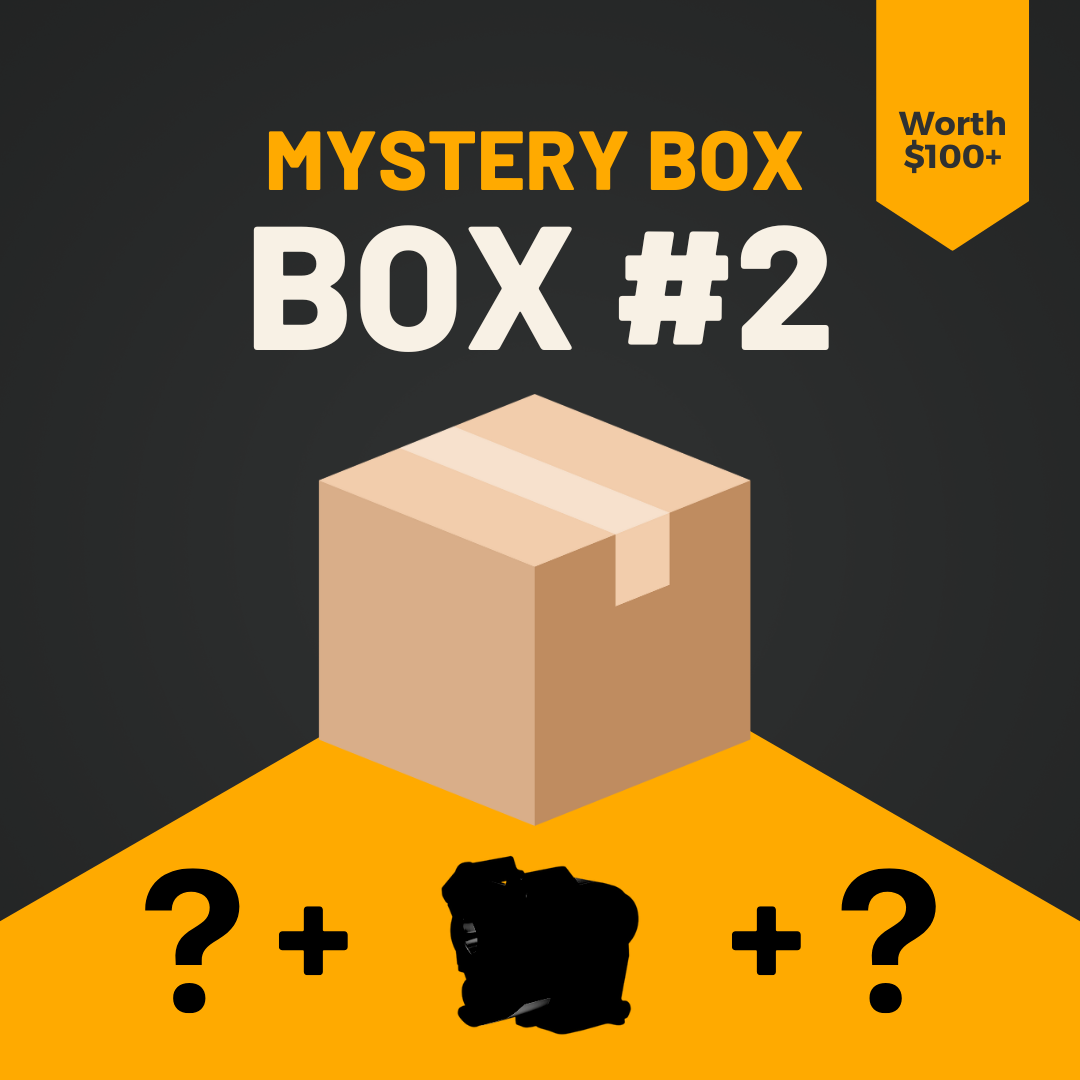Snipers are some of the deadliest and coolest soldiers in many people’s opinion. In the part one of this article, I will give a brief introduction to different early scope reticle types and their application during WWII. You will get an idea of how a sniper’s world looks like when he is pulling his trigger.
Early scope reticle types
The German #1 reticle is one of the oldest scope reticle types in the world. It is a thicker vertical reticle in the scope, just like a magnified front iron sight of a rifle. The reticle has a horizontal line perpendicular to the large crosshair, such as the reticle of the Weaver M8 scope of the M1 Garand C/D, and the PU scope of Mosin Nagant. The German reticle has a thicker reticle, so it might be a bit difficult to accurately shoot at a longer distance, but this kind of reticle is especially suitable for fighting from the forest and in dim conditions, because the thicker reticle can Let people quickly aim at the target.

German #1 Reticle
The fine crosshair reticle also appeared pretty early. The initial fine crosshair reticle was simple. Its windage line was used as a horizontal-identifying line before the appearance of the duplex crosshair. The width of the windage and elevation line was the same all the way through, which caused a problem. If the line was too thin, it was bad at getting on target quickly. If it was too thick, it will cover up the long-range target, so it was very important to choose the right width of the line at different magnifications.
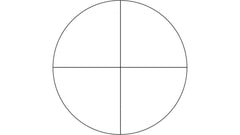
Fine Crosshair Reticle
The Leupold’s duplex crosshair reticle has pioneered the duplex crosshair reticle which is characterized by a thin crosshair near the aiming point and thicker lines near the edge. This allows the shooter to latch onto the target by the thicker outer lines quickly and then aim accurately with the fine crosshair.
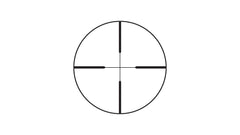
Duplex Crosshair Reticle
The German #4 reticle is much the same as Leupold’s duplex crosshair reticle, except that the upper elevation line is as thin as the crosshair, which allows for a clearer view. The German #4 reticle is very popular in Europe, and even some American shooters.
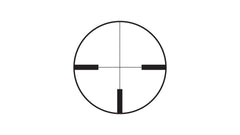
German #4 Reticle
Modern Scope Reticle Types
Mil-Dot Reticle
In fact, the Mil-dot was used as a measuring tool by submarines as early as World War I. However, the minimum spacing of the dot they used at that time reached 10 mils. Such a large spacing would be very inaccurate if used in rifle scopes. The earliest application of Mil-dot ranging to gun sights should be the SPO-1 scope on the Soviet SVD sniper rifle. However, the SVD used mil-hash instead of mil-dot.
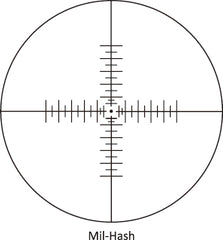
The Mil-dot reticle can be described as the most common reticle in the scope application today. The Mil-dot reticles are designed on the basis of the fine crosshair reticles so that the simplicity of the fine crosshair is retained. It now can measure distances and the thicken the lines at the edge from duplex crosshair reticle help with quick target acquisition. It kills three birds with one stone. For the scope, the simpler the reticle and the easier it is to be accepted by the sniper, the better this is. Mil-dot reticle is the best proof of this.

Mil-dot reticle
So, how the Mil-dot reticle can be used for ranging. If you can estimate the length of an object that fits between two of the dots inside the scope and times 1000. That’s the distance from the point of observation to the object that you are aiming at.
Here is the formula that can be used to calculate the distance:
(Target Size (yds) x 1000) / MILs read = yards to target
Using mathematical definition, it is 1/6175 of a circle. However, this number is really difficult to calculate. Therefore, there are two division: an American one which reduced it to 1/6400 of a circle, while Russians enlarged it to 1/6000 of a circle. Because of the simplification, there are errors in both. For example, the American version has an error of about 2 yards in the measured distance at a distance of 100 yards, but this is acceptable.
Pinty offers a wide range of Mil-dot scopes in our mid-range shooting collection. The 4-16*40mm variant is the most popular of them all which can illuminate in three different colors: red, green, and blue.
